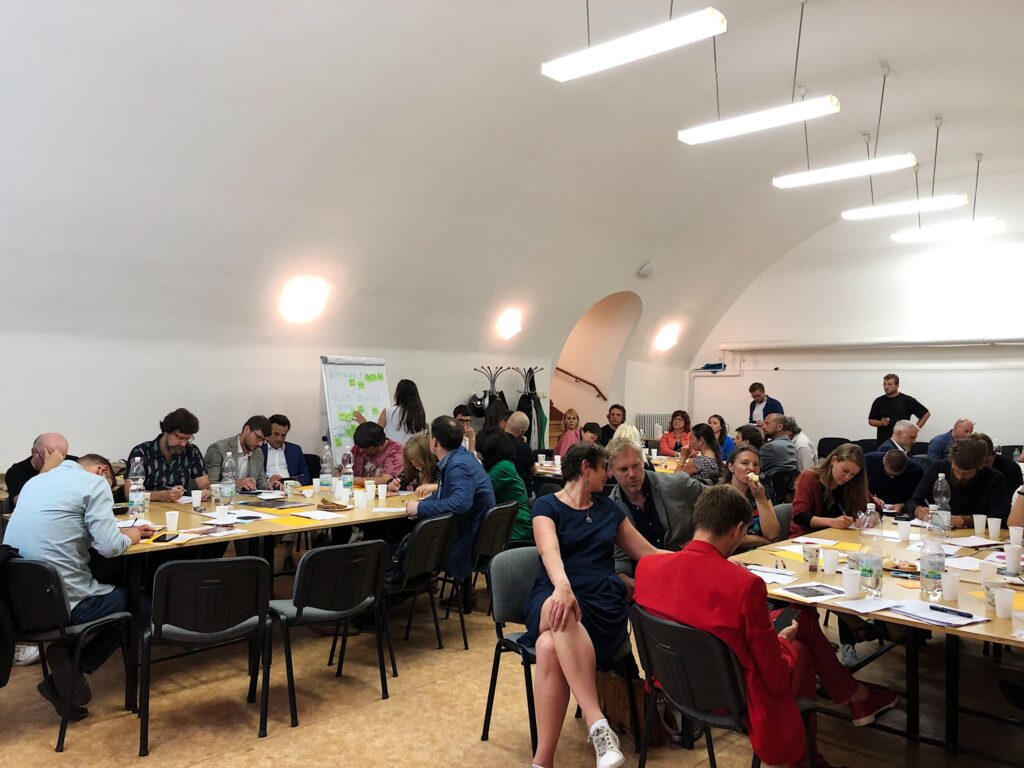Wednesday 7th June was a day of strategic planning for the Participation Factory. In the morning we organized a participatory meeting of experts in Pilsen, Czech Republic. We discussed with them the critical issues of the city in relation to the update of the strategic plan. Later in the afternoon, part of our team went to another Czech city, Říčany, where an outdoor event for the public was held regarding their newly developed strategic plan. Although the scenarios were very different, we set up both events to gather valuable data that can help implement the visions of each project. There are different forms and methods that can be used in participatory strategic planning. So, how exactly did the morning in Pilsen go?
The strategic plan sets the direction for the future development of the city. It becomes a key tool for organizing its development and coordinating individual interests so that the city prospers as a whole. Through the strategic plan, the city’s leadership demonstrates that it wants to start a conversation about the future of its citizens and that it strives to improve their quality of life and sustainable development. The Strategic Plan provides the public and the business community with information about long-term development plans.
Local experts from various sectors gathered at the Pilsen City Hall to discuss key issues of Pilsen in connection with the update of the city’s strategic plan. The aim of the meeting was to gather input and identify topics for a public meeting to be held in the autumn and to collect data for working groups that will work on the strategic plan update during the summer. The aim of the whole participatory process is to set up a collaborative process that includes citizens, professionals, organizations and institutions to gather information, opinions and feedback.
The participants first assessed the current state of the city. They discussed in groups the strengths and weaknesses as well as the potential of Pilsen from a professional and purely civic perspective. As positive aspects, they most often mentioned the quality and availability of public transport, the presence of a university, and the rich culture in the city. Among the negative aspects of the city, participants ranked excessive passenger traffic in the city centre, the lack of cycle paths and pedestrian infrastructure, and the present feeling of danger and disorder in the streets.
Together with the workshop participants we reflected on the potential of the city that can be exploited and further developed. The key actors and experts of Pilsen most often mentioned the potential of Pilsen as a university city, motivating young people to stay or return to the city, or benefiting from the local potential for tourism. At the same time, we needed to define five cross-cutting themes that will serve as a framework for the autumn public meeting. Topics such as security and transport will be addressed.
We will find out how the public will complement the vision of Pilsen’s future in the autumn. Until then, stay in touch with us and if you are also interested in strategic planning and participatory engagement, please contact us at info@participationfactory.com

